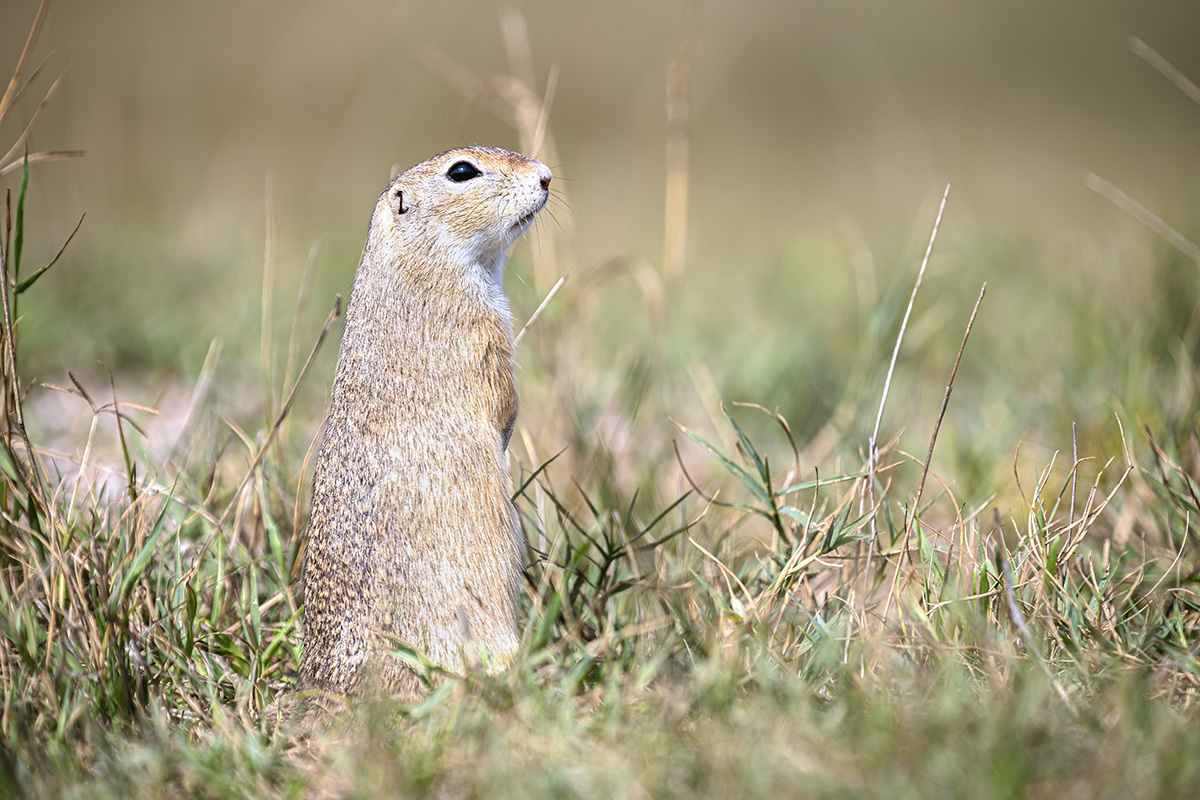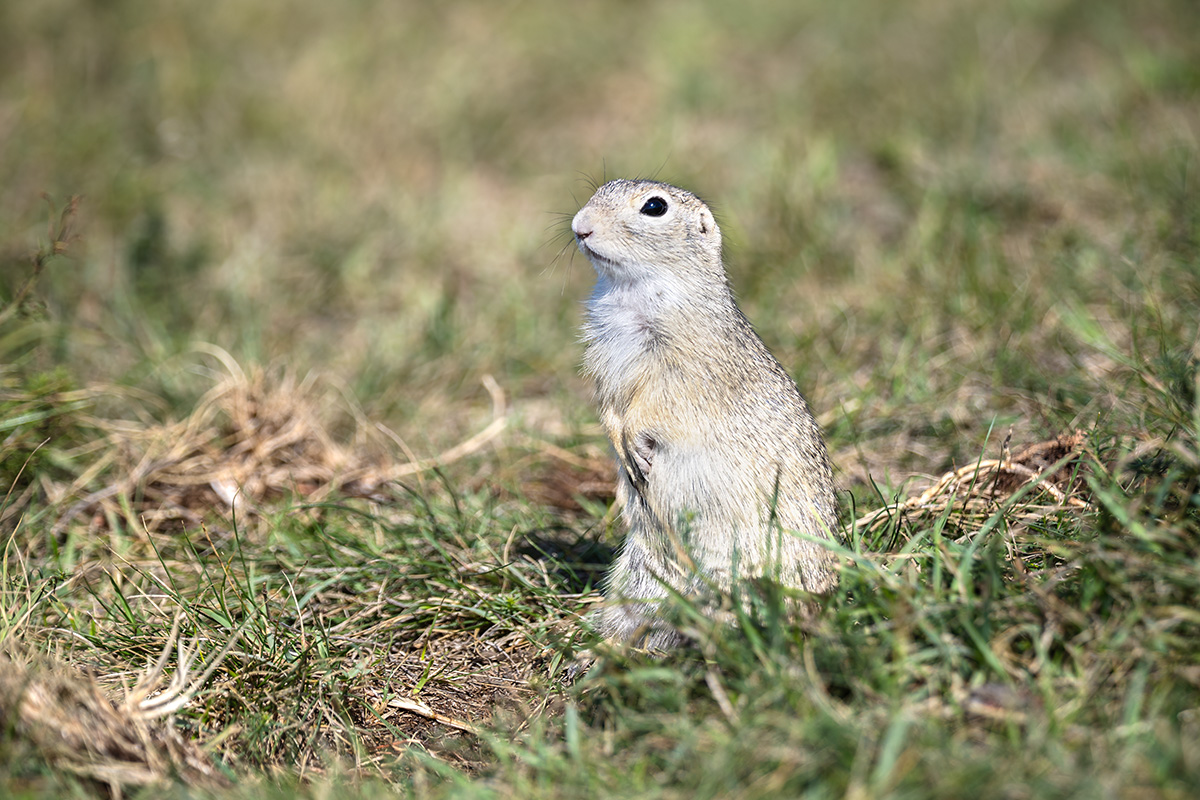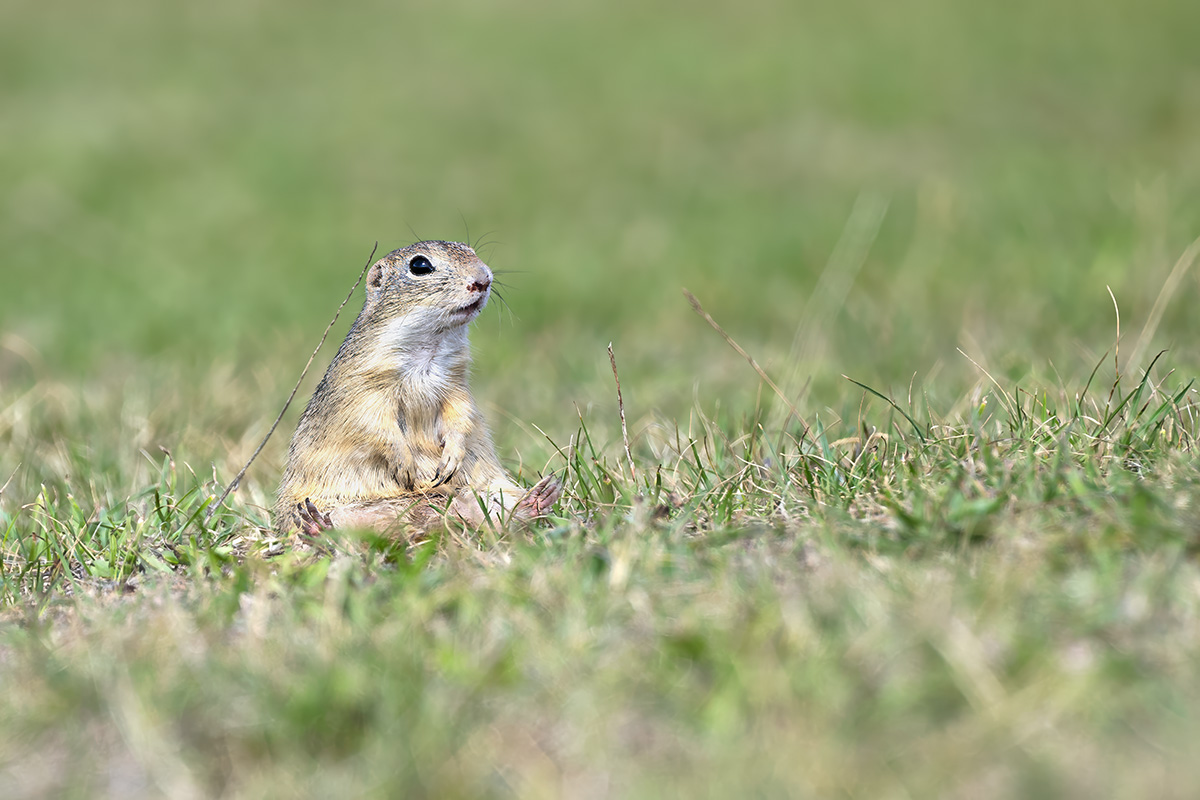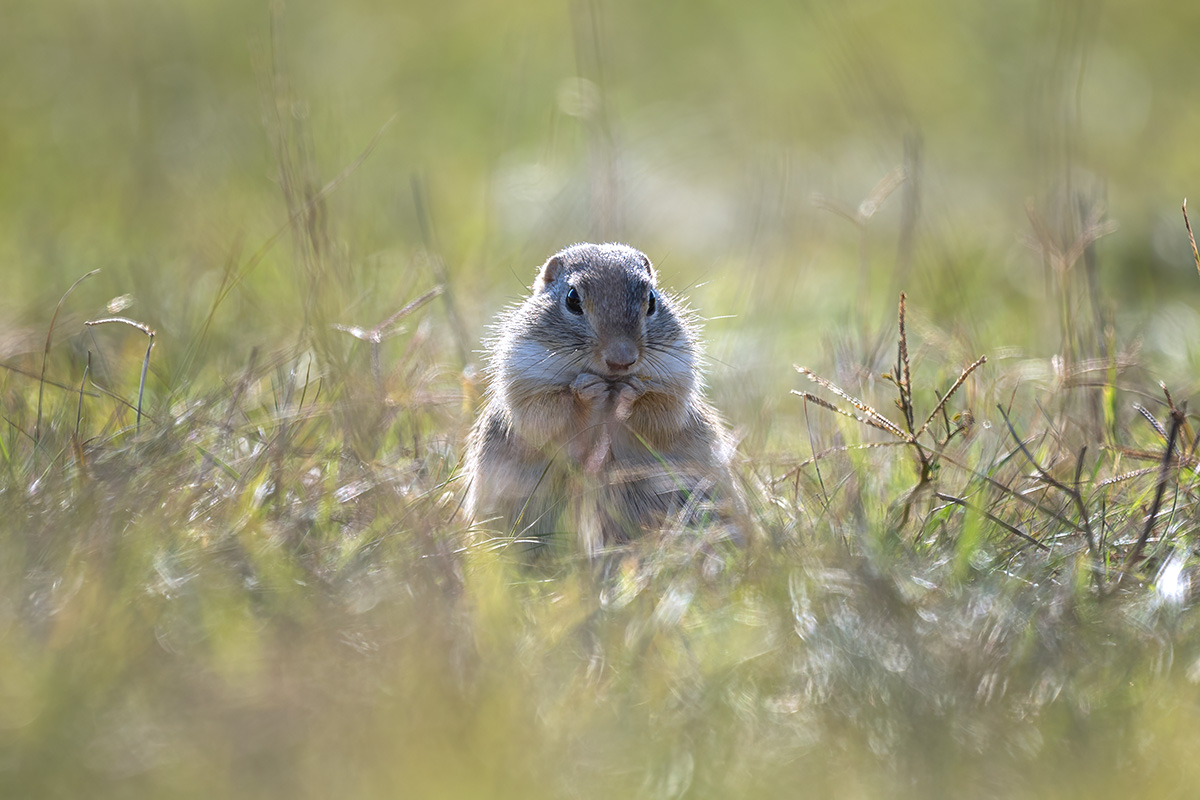There’s a certain magic in Tihany that isn’t found in its lavender fields or its sweeping views over Lake Balaton, but in something much smaller - a flash of fur, a curious glance, and the delicate rustle of grass. The European ground squirrel may be tiny, yet it captures hearts in an instant. Here, among the sun-warmed meadows of the Inner Lake, these little creatures live their quiet lives, carrying with them a story of return, resilience, and the gentle balance between people and the wild.
European ground squirrel - A small guardian of the grasslands
If you’ve ever stood on the gentle slopes above Tihany’s Inner Lake and felt the warm summer breeze brush past, you might have caught a quick movement in the grass. That sudden dash, the tiny paws, and the curious eyes belong to the European ground squirrel, a creature so charming that it stops many visitors in their tracks.

But here’s the thing - these animals didn’t arrive here by accident. Decades ago, the Tihany Peninsula was alive with huge populations of ground squirrels, much like other grazing areas across Hungary. They thrive where the grass is short, and they actually benefit from shared land with grazing animals. Over time, those natural habitats faded away, and the ground squirrels became a rare sight.
In 2003, the Balaton Uplands National Park Directorate decided to change that. Knowing that gray cattle grazing could be brought back to the Inner Lake meadows, they reintroduced the first colony. It wasn’t done to create a tourist spectacle - it was about restoring an old harmony between land, animal, and environment. And over the past twenty years, that relationship has proven to be both stable and fruitful.
Good to know about these little creatures
The European ground squirrel’s home range is surprisingly limited. You can find it scattered across Central and Eastern Europe - in parts of Poland, the rolling fields of the Czech Republic, and the meadows of Austria. To the east, it stretches as far as the Balkan Peninsula, and in Russia, it reaches the banks of the Volga. In Hungary, it appears here and there, often where you least expect it.
It thrives even in cultivated steppes, so long as it has access to short-grass meadows, pastures, or gentle hillsides. In the highlands, it settles only in sunny grazing areas, favoring the wide-open plains instead. Its needs are modest but specific - grass that is neither too tall nor too sparse, just the perfect balance for both safety and comfort.

The European ground squirrel measures just 18–24 centimeters in body length, with a tail of 4–9 centimeters, and weighs between 170 and 430 grams. About the size of a rat, it looks like a miniature marmot brought to life. Its back is cloaked in grayish-yellow fur, lightly speckled, while its belly glows with a soft yellow hue and its throat shines white.
The fur is silky to the touch yet so fine that it almost feels bristly. Its short tail is thickly furred with a darker tip. Large, dark eyes sit on the sides of its head, giving it a full panoramic view of its world, while tiny ears barely peek from its coat. Strong, nimble forelegs are perfect for digging and for holding food delicately while eating. Often, it stands upright to survey its surroundings, and when it runs, its little tail points skyward.
Its warning call is a sharp whistle that cuts through the air, but when content, it murmurs in soft purrs or a gentle, trilling song. At the first hint of danger, it vanishes in an instant, slipping into the safety of its underground tunnels.
The quiet danger of kindness
The European ground squirrel is bold enough to approach within a couple of meters of a person, even without any bribes. Their natural curiosity, paired with their disarming cuteness, makes it incredibly tempting for visitors to offer them food.

But that well-meaning gesture can cause more harm than good. In the wild, a ground squirrel knows exactly what it can and cannot eat. Their diet comes from what the land offers, and those choices are safe. Human food, however, is another story - often far too salty, sweet, or processed for their tiny systems to handle.
The National Park has put up signs urging people not to feed the squirrels, but the rule isn’t always followed. And while most tourists truly want to help, the healthiest gift they can give these animals is simply to watch, enjoy, and let them forage as they would in the wild.
Tihany’s living photo opportunity
As a photographer, I’ll admit it’s hard to resist snapping dozens of shots of the European ground squirrel in action. They’re naturals in front of the lens - standing upright with those tiny paws clasped, or stretching their necks just enough to peer over the grass like miniature sentinels - or... as shown on the picture below.

The Inner Lake’s open fields create a dreamy backdrop, especially on late summer afternoons when the light turns golden. I often crouch low, camera at the ready, just waiting for one to pop up from its burrow. Sometimes, if you’re patient, they’ll pause long enough to give you that perfect, curious glance - a fleeting moment you can carry home in pixels.
The joy is not only in the shot itself, but in being part of their quiet world for a while. When you lower yourself to their height, you start to notice the details: the gentle sway of the grass, the shimmer of lake water in the distance, and the faint rustle of movement underground.
My gear to photograph the European ground squirrel
For photographing ground squirrels, a good telephoto lens works wonders – and honestly, the bigger the reach, the better. I personally stick with my trusty Canon EF 70–200 mm f/2.8 IS II USM paired with a 2× extender. A bright, wide-aperture lens is your friend when it comes to faster shutter speeds, though in most cases, speed isn’t the main concern. These little creatures often spend their time nibbling or quietly observing the world around them, barely moving at all. But the moment they decide to sprint or square off with each other, they turn into lightning. That’s when you’ll appreciate having a camera capable of rapid continuous shooting and a lens that lets in plenty of light so you can freeze those split-second moments. As for filters, you can leave them off most of the time, but a circular polarizer can be handy if the lighting conditions require it.
The right approach to photographing the European ground squirrel
Even though these little ones are used to seeing people, they still have that natural shyness. The moment you get too close, they dart away. Usually, they’ll let you come within about 5–6 meters before deciding you’ve crossed the line. I took a different route. Instead of chasing them, I became part of their world. I sat, sometimes even lay down, right among their burrows. At first, they vanished underground, leaving only silence.

But curiosity is a powerful thing. One by one, tiny heads peeked out, eyes fixed on me, measuring whether I was a threat. Then, slowly, they crept closer. That’s when the magic happens - perfect moments for intimate portraits. Sometimes they came so near I couldn’t even focus my lens, and a few brave souls almost climbed right onto it.
So just be still, be patient… and let the miracle come to you.
Coexistence on ancient land
The return of the European ground squirrel to Tihany serves as a reminder that wildlife and human activity can coexist when managed with respect. The gray cattle keep the grass just the way the squirrels like it, and in return, the squirrels enrich the land’s biodiversity.
Over the past two decades, this careful balance has allowed the population to grow steadily without becoming an uncontrolled tourist attraction. It’s a rare example of ecological restoration working exactly as intended - quietly, without drama, and with genuine benefit for the species involved.
When you walk these meadows today, you’re stepping into a place where history, conservation, and daily life intertwine. It’s not a zoo, it’s not a park enclosure - it’s the squirrels’ home, and we’re the guests.
A gentle farewell
Every time I leave Tihany after a day of photographing the European ground squirrel, I feel a mix of joy and responsibility. Joy, because I’ve been close to these endearing animals in a setting that feels timeless. Responsibility, because I know how fragile that harmony is.
If you visit, come with a camera, not a snack. Let your curiosity mirror theirs. Watch the way they dart between burrows, how they stretch in the sunlight, how their tiny ears twitch at the faintest sound. That’s the real treasure - the chance to see a wild creature live as it should, without interference.
And when you walk away, you’ll carry more than just photos. You’ll have a story about a place where nature and tradition meet, where the land still whispers to its smallest inhabitants, and where a community came together to give them back their rightful home.
If you’re as captivated by this topic as I am, don’t miss out on exploring more insights in my other topics and contents in my Portfolio!

